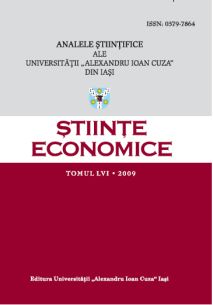On the medieval urban economy in Wallachia
On the medieval urban economy in Wallachia
Author(s): Laurenţiu RădvanSubject(s): Middle Ages, International relations/trade, Rural and urban sociology
Published by: Editura Universităţii »Alexandru Ioan Cuza« din Iaşi
Keywords: regional history; medieval trade; charters of privilege; merchants; craftsmen; Wallachia;
Summary/Abstract: The present study focuses on the background of the medieval urban economy in Wallachia. Townspeople earned most of their income through trade. Acting as middlemen in the trade between the Levant and Central Europe, the merchants in Brăila, Târgovişte, Câmpulung, Bucureşti or Târgşor became involved in trading goods that were local or had been brought from beyond the Carpathians or the Black Sea. Raw materials were the goods of choice, and Wallachia had vast amounts of them: salt, cereals, livestock or animal products, skins, wax, honey; mostly imported were expensive cloth or finer goods, much sought after by the local rulers and boyars. An analysis of the documents indicates that crafts were only secondary, witness the many raw goods imported: fine cloth (brought specifically from Flanders), weapons, tools. Products gained by practicing various crafts were sold, covering the food and clothing demand for townspeople and the rural population. As was the case with Moldavia, Wallachia stood out by its vintage wine, most of it coming from vineyards neighboring towns. The study also deals with the ethnicity of the merchants present on the Wallachia market. Tradesmen from local towns were joined by numerous Transylvanians (Braşov, Sibiu), but also Balkans (Ragussa) or Poles (Lviv). The Transylvanian ones enjoyed some privileges, such as tax exemptions or reduced customs duties.
Journal: Analele Ştiinţifice ale Universităţii »Alexandru Ioan Cuza« din Iaşi. Ştiinţe economice
- Issue Year: 56/2009
- Issue No: 1
- Page Range: 489-501
- Page Count: 13
- Language: English

